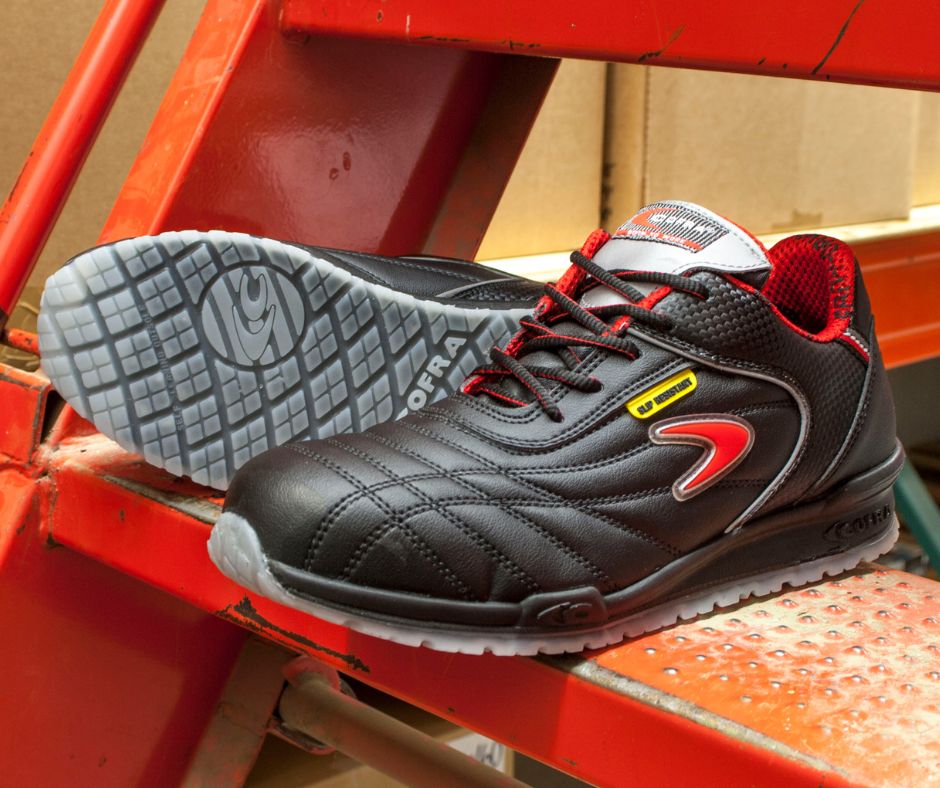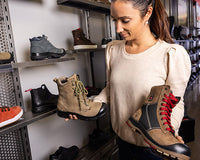The outsole of a boot is one of the most important parts of the shoe as it is the layer that is directly between you and the ground. It must be able to withstand slipping or damage when the job calls for it.
The different types of materials and their characteristics
The sole can be made of different types of materials. The choice of material is important since each type has different advantages. Here are the most common materials:
Rubber: Rubber is one of the best known materials for making an insole. The reason is simple, it is the most versatile material. No matter what the outdoor conditions are (cold, heat, rain or snow) rubber will provide good traction and remain non-slip.
Rubber is also known to offer good abrasion resistance. If you walk a lot, it will also be a material of choice since it supports friction better and wears less quickly.
PU: Polyurethane is a plastic material. It is lighter and more flexible than rubber and also offers good protection against abrasion. Indoors or at a comfortable outdoor temperature, it will be non-slip. PU is a less expensive material than rubber.
However, PU has some limitations. It hardens in the presence of cold and thus becomes very slippery (much like summer tires in the winter). It will also melt in very high temperature situations (around 90/100°C). It also supports friction less well than a rubber sole. PU has an "expiration date". The sole will disintegrate with time. This degradation will be more or less rapid depending on the storage conditions of the shoe.
TPU: Thermoplastic polyurethane is a rubber with PU injections. It is less expensive than rubber and lighter. However, it will be heavier than PU.
Like PU, it hardens in the presence of cold. Fortunately, TPU will not disintegrate by itself.
EVA: Ethylene vinyl acetate is a very light and flexible material that is used for running shoes. It absorbs shock well (when you jump for example). However, it is slippery in cold weather and this material crumbles more quickly. That's why you never see safety shoes with only an EVA outsole. What is more common is to inject rubber to overcome the disadvantages mentioned above.
As you may have noticed, the outsole can be made of several different materials to optimize its characteristics. It is also common to find shoes with a rubber outsole for example, but with a midsole (upper layer) made of lighter materials (EVA, PU...). The shoe thus benefits from the performance of a rubber sole with more lightness.

Insoles with special technology
When choosing your sole, it is also important to look at the different types of sole technology and construction. Many manufacturers will have their own insole technology and the names will change from one to another. There are also independent manufacturers with outsole designs that can be used by multiple suppliers. The best known is probably Vibram.
Vibram offers several types of rubber soles according to the needs of different trades:
Fire & Ice: for optimal performance in extreme conditions (cold or hot)
Megagrip Pro: a more recent and improved version of the Fire & Ice
Arctic Grip Pro: for more stability on wet ice and in freezing rain
TC4+: better grip, better resistance to oil, heat and wear
If your job does not involve special conditions or extreme performance, it is not essential to have a Vibram outsole; it often increases the price of your shoe.

What to choose?
What type of outsole should you choose? That's a good question and it depends on a lot of factors. Here are a few things to keep in mind:
- If you need a shoe in cold weather, choose the rubber outsole. Choose the Vibram Arctic Grip Pro sole for those in frequent contact with wet ice or black ice.
- If you work in extreme heat, choose the rubber sole, preferably with Vibram Fire&Ice or Megagrip Pro protection.
- If you walk a lot in your shoes, choose the rubber sole.
- If you prefer lighter shoes, choose the PU or TPU sole.
If you don't have any particular conditions, no one type of sole is particularly recommended. It will depend on your personal taste and budget. If you have any questions, our consultants will be happy to answer them!
Visit one of our 5 stores or write to our customer service at info@belmont-inc.com.



